Why the Best Skincare Routine for Rosacea Matters
What Is Rosacea | What Makes Rosacea Worse | Why Skincare Matters for Rosacea | Best Skincare Routine for Rosacea | Top Ingredients for Rosacea | Choosing the Right Skincare Products | Rosacea-Friendly Makeup Tips | Lifestyle Tips for Rosacea | When to See a Dermatologist | FAQs

What Is Rosacea?
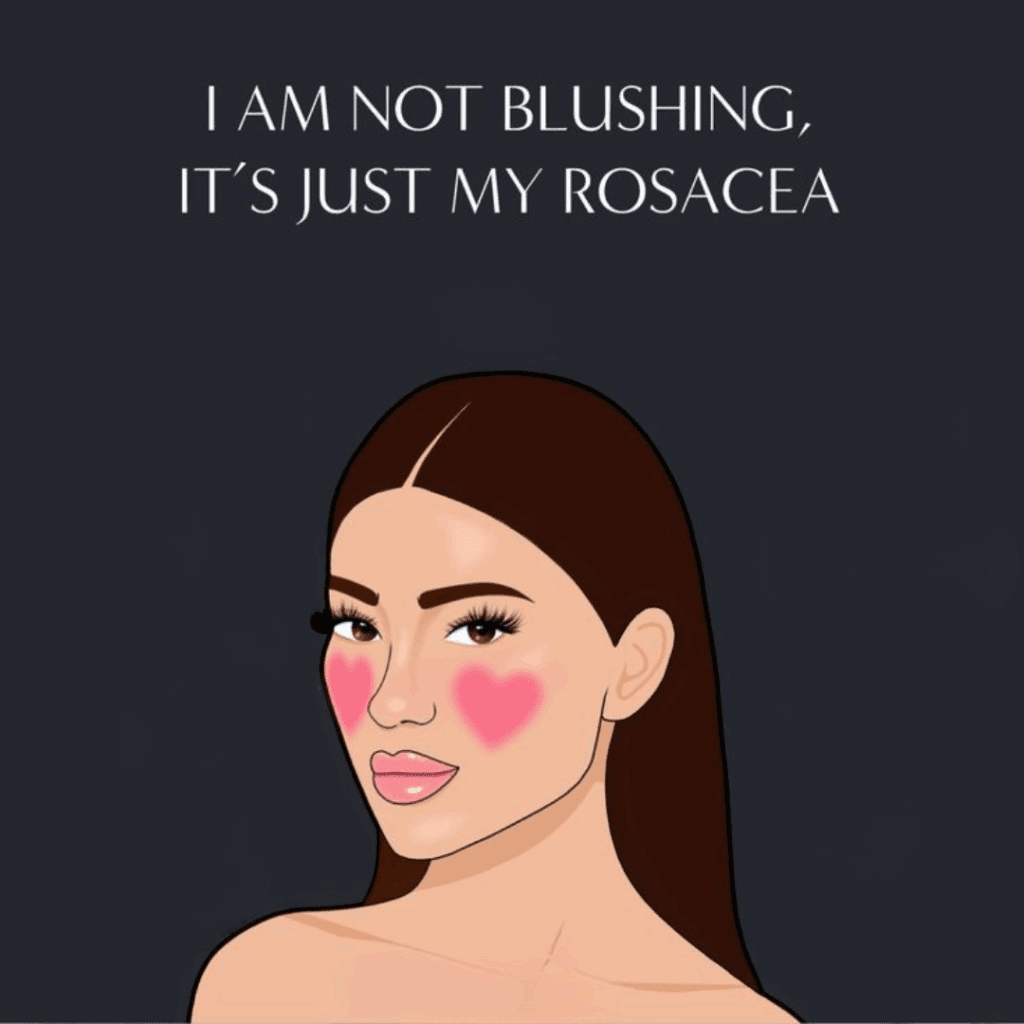
Rosacea is a chronic inflammatory skin condition that causes persistent redness, visible blood vessels, and sometimes small, red, pus-filled bumps. It often affects the cheeks, nose, chin, and forehead and is commonly mistaken for acne, eczema, or allergies.
Signs of Rosacea:
- Redness and visible blood vessels
- Swelling and acne-like breakouts
- Thickened skin, especially around the nose
- Red, irritated eyes
Rosacea is most common in adults 30-50 with fair skin. Beyond the physical symptoms, it can take an emotional toll, leading to lowered self-confidence and social anxiety.
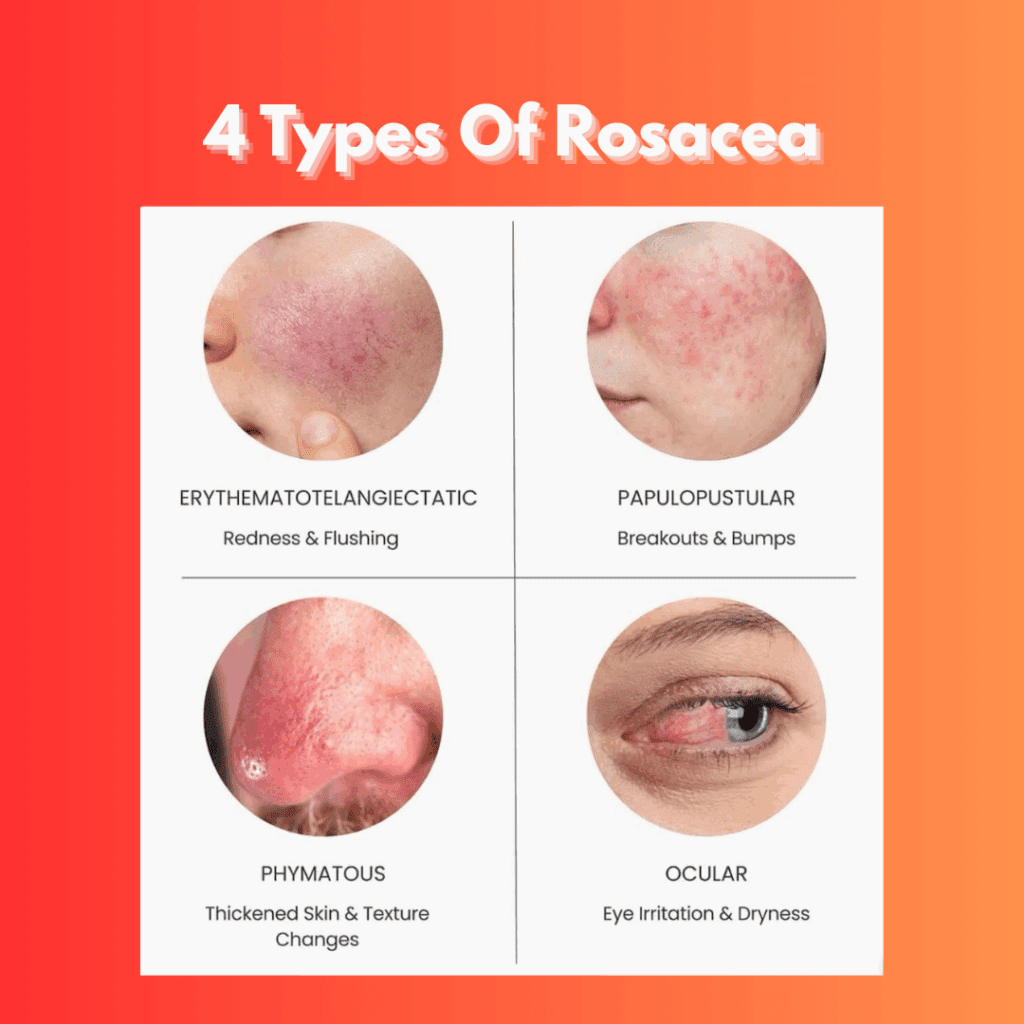
What Makes Rosacea Worse?
Many factors can trigger or worsen rosacea symptoms. Knowing your triggers is the first step toward managing flare-ups.
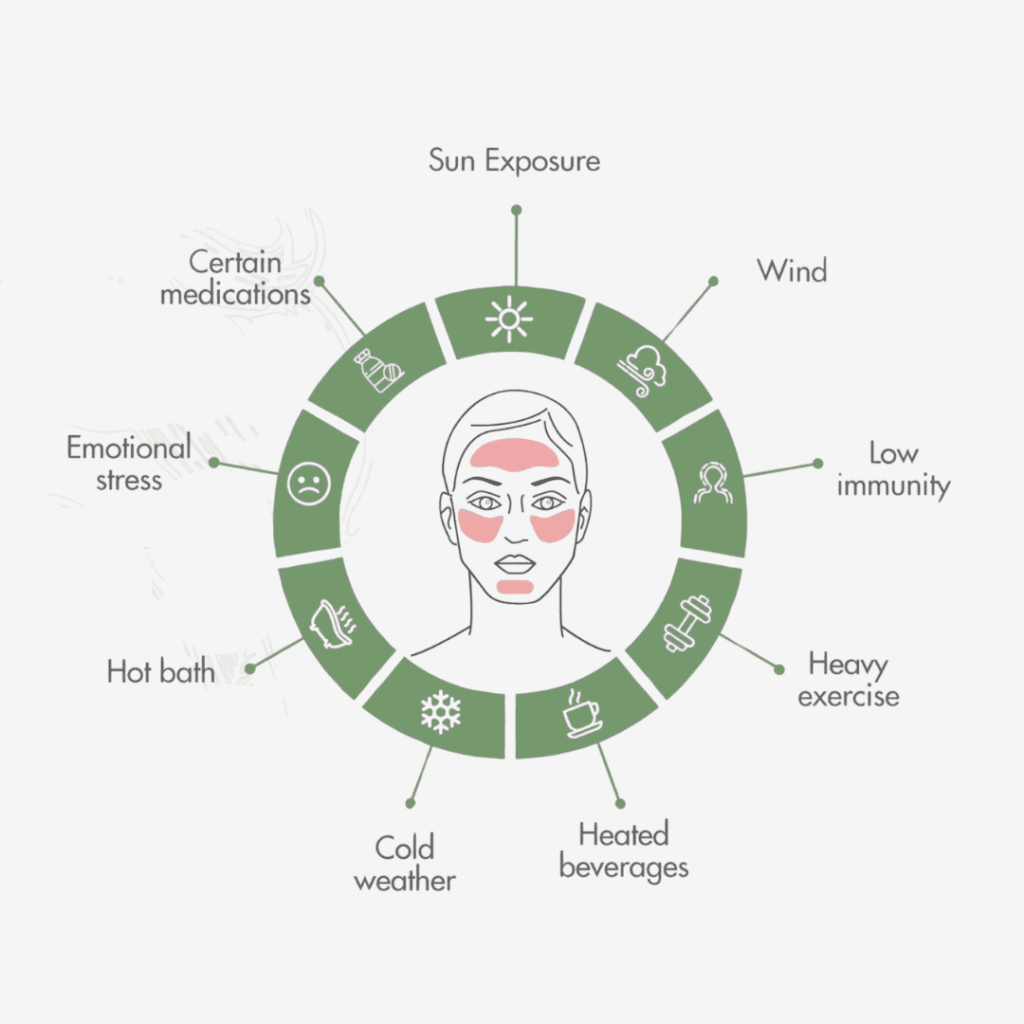
Common Triggers:
- Sun exposure
- Stress and anxiety
- Hot beverages and spicy foods
- Alcohol (especially red wine)
- Extreme temperatures
- Harsh skincare products
Less Obvious Triggers:
- Emotional stress
- Hair products dripping onto the face
- Aggressive exfoliation
- Certain medications (like blood pressure drugs)
Keeping a skin diary can help you pinpoint and avoid your personal triggers.
Take the first step toward calmer skin — scroll down and start building your rosacea-friendly skincare routine now.
Common Myths About Rosacea (and the Truth)
There are many myths surrounding rosacea, often leading to confusion, frustration, and improper treatment. These misconceptions can not only worsen symptoms but also contribute to the stigma surrounding the condition. Let’s debunk some of the most common myths about rosacea so you can better understand how to care for your skin and manage flare-ups more effectively.
Myth 1: Rosacea is caused by poor hygiene.
Truth: Rosacea is a chronic inflammatory skin condition that isn’t linked to cleanliness. While it might seem that rosacea occurs due to lack of care, it’s actually a result of complex factors, including genetics, immune system irregularities, and environmental triggers. People with rosacea have skin that is more sensitive and prone to inflammation. No amount of scrubbing or cleaning will cure or prevent rosacea—gentle care and proper skincare are key.
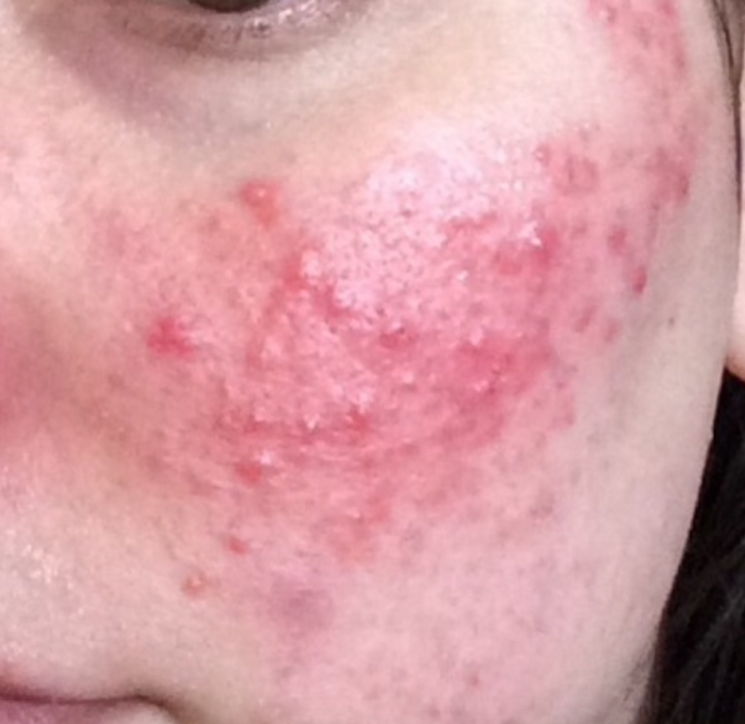
Myth 2: Rosacea is just adult acne.
Truth: While rosacea shares some symptoms with acne, such as redness and acne-like bumps, it’s an entirely different condition. Rosacea is a vascular disorder that causes blood vessels to enlarge and appear visible under the skin, leading to the characteristic redness. Unlike acne, rosacea doesn’t stem from clogged pores or bacterial infection. Treating rosacea requires a gentler, more sensitive approach than treating acne, as harsh acne treatments can worsen rosacea symptoms.
Myth 3: Rosacea will go away on its own.
Truth: Rosacea is a lifelong condition that requires consistent management. It doesn’t go away on its own and can worsen without proper care. If left untreated, rosacea flare-ups can become more frequent and severe. A tailored skincare routine, including gentle cleansers, calming treatments, and sun protection, is necessary to control symptoms and minimize flare-ups. Seeking professional guidance from a dermatologist or esthetician is often key to finding an effective treatment plan.
Myth 4: Only fair-skinned people get rosacea.
Truth: While rosacea is more common in individuals with fair skin, it can affect people of all skin tones. Those with darker skin tones may experience rosacea differently, with symptoms such as hyperpigmentation instead of redness. Since the condition is often underdiagnosed in people with darker skin, it’s essential to seek professional help if you notice signs of rosacea, regardless of your skin color.
Myth 5: Rosacea only affects the skin.
Truth: While rosacea is most commonly associated with skin redness and visible blood vessels, it can also affect the eyes. This is called ocular rosacea, and it can cause irritation, dryness, and redness in the eyes, sometimes even leading to vision problems. If you experience symptoms such as gritty, watery eyes, or sensitivity to light, it’s important to consult a healthcare provider for proper treatment.
Myth 6: All rosacea treatments are the same.
Truth: There is no one-size-fits-all treatment for rosacea. The condition manifests differently in every individual, so treatment plans must be customized based on the severity of symptoms and personal triggers. A treatment plan might include topical creams, oral medications, and lifestyle changes. What works for one person may not work for another, which is why it’s essential to work with a professional who understands your skin’s unique needs.
Understanding these myths and truths helps to clear up misconceptions, enabling you to approach rosacea care with a more informed mindset. By recognizing that rosacea is a chronic, but manageable condition, you can avoid unnecessary irritation and take proactive steps to protect your skin.
Why a Proper Skincare Routine Matters for Rosacea
When managing rosacea, consistency and gentleness are your best allies. A well-structured, consistent skincare routine helps maintain balance and prevent flare-ups, which are often triggered by harsh treatments or constantly switching products. Skin with rosacea is inherently more sensitive, so it requires products that support its natural healing process rather than disrupt it. Once you find a skincare routine that works for your skin, it’s important to stick with it, as frequent changes in products can destabilize your skin and lead to irritation.
A proper skincare routine for rosacea involves more than just applying the right products—it’s about adopting a lifestyle of care that nurtures and protects your skin. Consistent use of gentle, soothing products can significantly improve the condition of your skin and help keep flare-ups at bay. Here’s why a dedicated routine is so important:
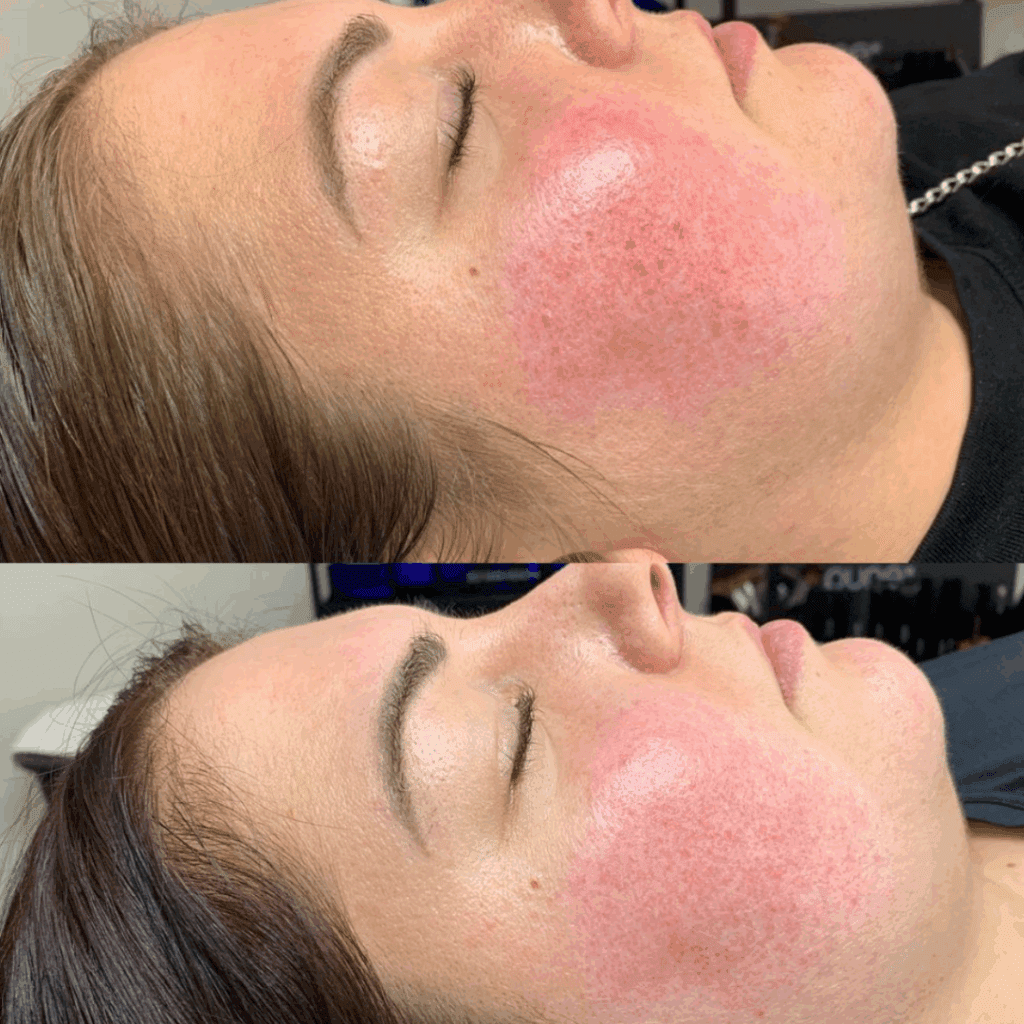
1. Reduces Redness and Irritation
One of the hallmark symptoms of rosacea is redness, which can appear as persistent flushing or visible blood vessels on the skin. The right skincare routine works to reduce this redness by using calming ingredients like niacinamide, which helps to strengthen the skin’s blood vessels and reduce inflammation. Regular use of gentle, soothing products can also help reduce irritation, which can worsen rosacea if left unchecked. This steady routine ensures that your skin remains calm and doesn’t flare up with every little irritation.
2. Strengthens the Skin’s Natural Barrier
People with rosacea often have a compromised skin barrier, which means their skin is less able to retain moisture and protect itself from external irritants. A good skincare routine will focus on strengthening this barrier by using hydrating and barrier-repairing ingredients, such as ceramides and hyaluronic acid. These ingredients work together to lock in moisture, prevent dryness, and protect the skin from environmental stressors that could trigger rosacea. Strengthening the barrier also helps prevent further damage, keeping your skin healthy and resilient.
3. Prevents Frequent Flare-Ups
Rosacea flare-ups can be unpredictable, but having a routine helps keep the skin balanced and minimizes triggers. When the skin is continuously exposed to harsh treatments, stressors, or irritating ingredients, it can easily become inflamed and prone to flare-ups. By sticking to a gentle, calming routine, you create an environment in which your skin is better equipped to handle triggers like sun exposure, stress, or certain foods. Preventing frequent flare-ups is crucial for long-term rosacea management and reducing the emotional impact of the condition.
4. Improves Skin Texture and Comfort
Rosacea can affect the texture of the skin, making it feel rough, dry, or uncomfortable. A consistent skincare routine that includes moisturizing and hydrating products helps improve skin texture by keeping the skin soft, smooth, and supple. Ingredients like aloe vera and green tea extract are known for their soothing and anti-inflammatory properties, helping to calm the skin while also providing much-needed hydration. This not only boosts comfort but also helps create a smoother complexion, which can enhance overall skin appearance and confidence.
By committing to a skincare routine that is both gentle and effective, you give your skin the best chance at remaining calm and healthy. The benefits of a proper routine go beyond just appearance—by reducing redness, strengthening the skin barrier, preventing flare-ups, and improving skin comfort, you’ll feel more confident in your skin and more in control of managing rosacea.
The Best Skincare Routine for Rosacea: Step-by-Step
Morning Routine
- Cleanse gently with lukewarm water
- Apply soothing serum (e.g., niacinamide)
- Moisturize with a ceramide-rich cream
- Apply mineral sunscreen (SPF 30+)
Night Routine
- Remove makeup and impurities
- Apply calming treatment (e.g., azelaic acid)
- Moisturize deeply to protect overnight
Building a gentle, supportive routine helps reduce sensitivity over time.

1. Cleanse Gently
Choose a mild, non-foaming cleanser that doesn’t strip your skin. A good creamy cleanser is from Jan Marini – Bioglycolic Cleanser.
Tips:
- Use cool water, not hot
- Pat your skin dry with a clean single use towel
2. Tone Carefully
If you use toner, opt for alcohol-free formulas with calming ingredients like chamomile or aloe.
Toners should hydrate and soothe, not irritate.
3. Treat with Serums
Best Ingredients for Rosacea Serums:
- Niacinamide
- Azelaic Acid
- Green Tea Extract
- Licorice Root Extract
Stick to one or two serums to avoid overwhelming your skin.
4. Moisturize Generously
A good moisturizer locks in hydration and strengthens your skin barrier.
Look for:
- Ceramides
- Hyaluronic Acid
- Squalane
- Fragrance-free formulas
Apply moisturizer to slightly damp skin for better absorption.
Not sure what is best for your skin? Learn more on the skincare guide!
Don’t guess when it comes to your skin. Explore our expert-approved skincare essentials made for rosacea-prone skin — and feel the difference.
5. Protect with Sunscreen
Sun exposure is one of the biggest rosacea triggers. Always wear mineral sunscreen with zinc oxide or titanium dioxide.
Sunscreen Tips:
- Reapply every two hours when outdoors
- Choose fragrance-free, sensitive-skin formulas
Need more tips? Get the info on the guide for wrinkle prevention!
Top Ingredients to Look For (and Avoid) in Rosacea Skincare

Ingredients to Look For:
- Niacinamide
- Ceramides
- Azelaic Acid
- Hyaluronic Acid
- Allantoin
Ingredients to Avoid:
- Alcohol
- Fragrance
- Menthol or eucalyptus
- Witch hazel
- Sodium Lauryl Sulfate (SLS)
Focus on soothing, hydrating ingredients to protect your skin’s health.
Protect your skin the smart way — read our full guide to medical-grade skincare!
How to Choose the Right Skincare Products for Rosacea
Picking the right products is key to avoiding flare-ups.
Tips for Choosing Wisely:
- Keep ingredient lists short and simple
- Prioritize barrier-repair ingredients like ceramides and niacinamide
- Avoid alcohol, fragrance, and harsh exfoliants
- Choose mineral-based sunscreens
- Look for “fragrance-free,” “non-comedogenic,” “hypoallergenic”
Always patch-test new products before applying them to your whole face.
Rosacea-Friendly Makeup Tips
Makeup can be a helpful tool to boost confidence while managing rosacea.
Makeup Tips for Rosacea:
- Use mineral-based, non-comedogenic foundations
- Choose fragrance-free, hypoallergenic products
- Apply lightweight, green-tinted primers to neutralize redness
- Dab products gently instead of rubbing
When applying makeup, start with clean, well-moisturized skin. Less is more when it comes to sensitive skin!
Look for brands that specialize in sensitive or medical-grade skincare lines to ensure minimal irritation.
Lifestyle Tips to Support Rosacea Care
Everyday Habits:
- Stay cool; avoid hot showers and steamy rooms
- Limit spicy foods and alcohol
- Manage stress with mindfulness or gentle exercise
- Use gentle fabrics (no scratchy towels or pillowcases)
- Stay hydrated
- Prioritize good, restorative sleep
Weather and Rosacea:
- Use a humidifier in dry climates
- Protect your skin with sunscreen and hats
- Shield your face with scarves in cold winds
Travel Tips:
- Bring your trusted skincare products
- Stay hydrated during flights
- Avoid using unfamiliar hotel toiletries
When to See a Dermatologist for Rosacea
Sometimes, managing rosacea at home isn’t enough.
Signs you should see a dermatologist:
- Symptoms are worsening despite skincare adjustments
- Frequent flare-ups affecting your quality of life
- Eye irritation or vision problems (potential ocular rosacea)
Treatments a dermatologist may recommend:
- Prescription creams or gels
- Oral antibiotics
- Light-based therapies (like laser treatment)
Getting professional advice can make a huge difference in managing severe rosacea.
Frequently Asked Questions (FAQ)
Can skincare make rosacea worse? Yes! Harsh products can irritate and inflame your skin. Always choose gentle, fragrance-free options.
What is the best moisturizer for rosacea? Look for calming, barrier-repairing moisturizers with ceramides, niacinamide, and hyaluronic acid.
Is rosacea permanent? Rosacea is chronic but manageable with a thoughtful skincare routine and lifestyle changes.
Can sunscreen trigger rosacea? Chemical sunscreens can irritate rosacea. Choose mineral sunscreens with zinc oxide or titanium dioxide.
Can rosacea spread beyond the face? Rarely, but it can extend to the neck, chest, or back in some cases.
Should I exfoliate if I have rosacea? Only very gently, using enzyme exfoliants instead of scrubs or strong acids.
Building a Rosacea Routine You Can Stick With
Managing rosacea is about consistency, patience, and kindness to your skin. With the right habits, you can enjoy clearer, calmer skin.
Timeline for Improvement:
- Noticeable changes within 2–4 weeks
- Strengthened skin barrier within 8–12 weeks
If flare-ups persist, consulting a dermatologist can help you explore additional treatment options.
Ready to feel confident in your skin? Explore more expert skincare tips and find the routine that brings out your best glow.